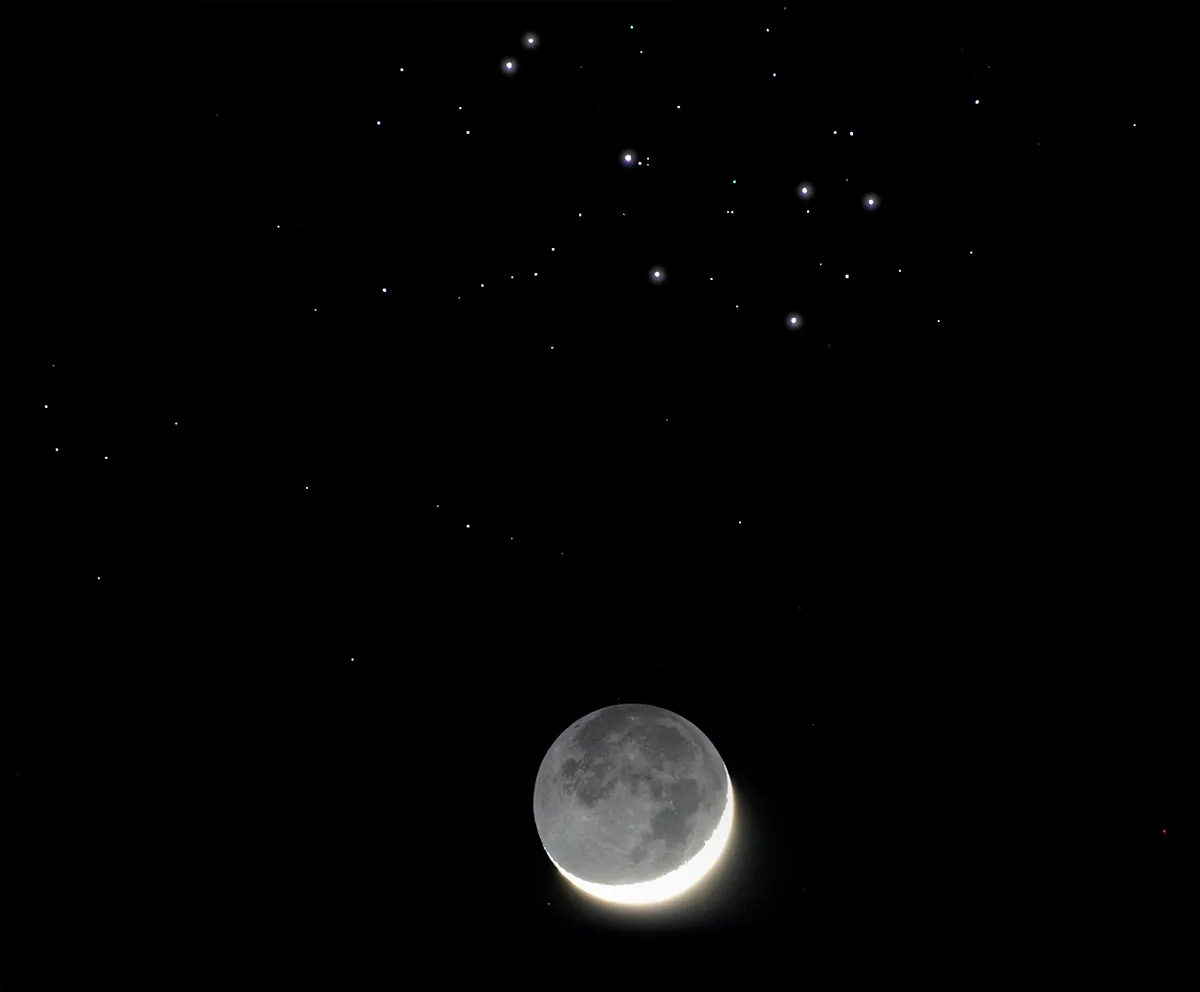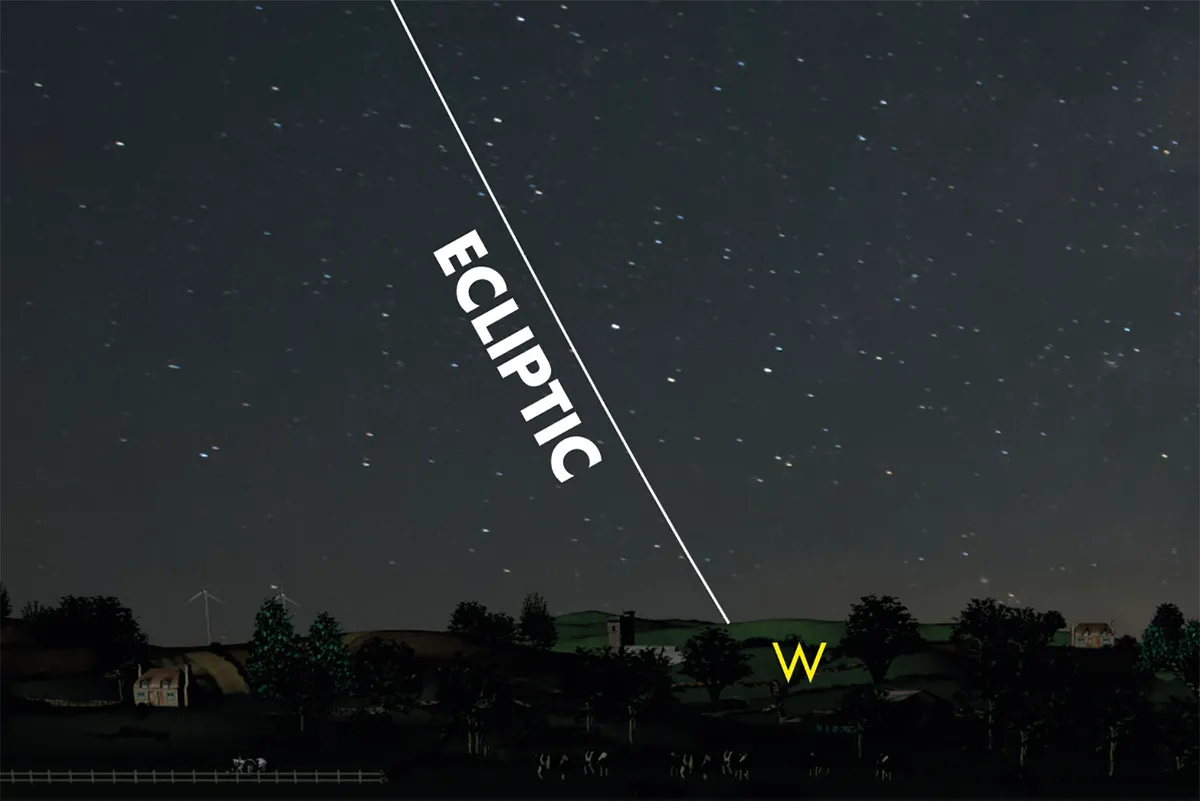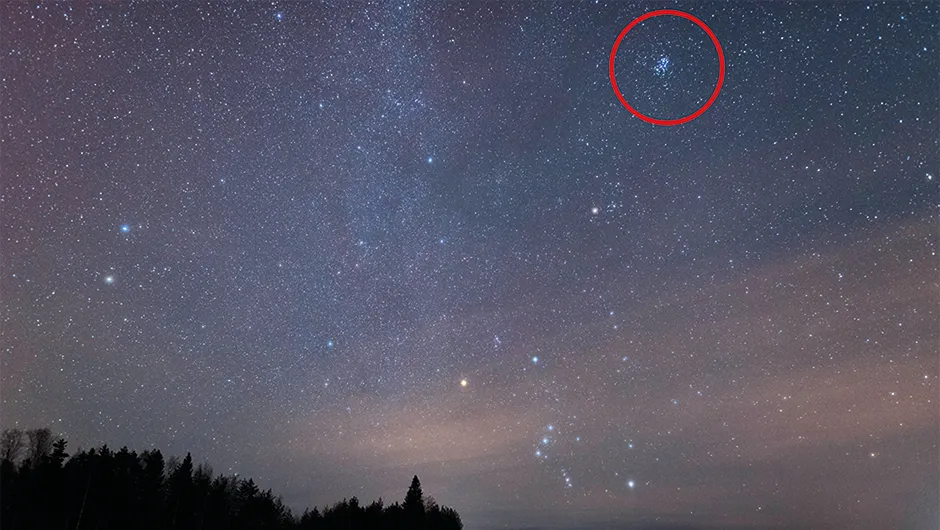If you've enjoyed watching the Harvest Moon supermoon rise this week, you're not alone.
We've received so many emails from stargazers showing us the amazing images they captured of the big, bright, beautiful full Moon.
The Moon is now waning, getting thinner and thinner every night, but this week's lunar spectacle isn't over just yet.
If you observe the Moon tonight and into tomorrow morning, you'll see it get close to, then pass in front of, a beautiful blue star cluster that's easily seen with the naked eye.
Here, we'll go through where to look and when.
For weekly stargazing advice, sign up to our e-newsletter and subscribe to our YouTube channel

The Pleiades, the Moon and the ecliptic
Given how many objects there are in our night sky, from the Moon and planets to distant stars and star clusters, it's not surprising that some closer objects may appear to pass in front of more distant objects.
When the Moon passes in front of a more distant object, it's known as a lunar occultation.
You may have heard of a lunar occultation of Mars, or a lunar occultation of Venus, for example.

This happens with objects that are located along or near the ecliptic, which is an imaginary line that the Sun traces across the sky over the course of a year.
When you look at the ecliptic, you're looking out across the plane of our flat, disc-like Solar System.
That's why the planets of the Solar System appear in the sky along the ecliptic.
And that's why deep-sky objects like stars or star clusters, that also happen to be located along the ecliptic, may sometimes appear close to the planets in the sky.

Of course, this is all a matter of perspective: those distant stars and star clusters are much further away than the planets.
The Pleiades star cluster is located just north of the ecliptic, and sometimes the Moon may cross the ecliptic, too.
That means that sometimes the Moon may appear to pass in front of the Pleiades, from our perspective on Earth.

The Pleiades can be seen with the naked eye, and you can locate it by following the three stars of Orion's Belt from left to right.
Extend an imaginary line and you'll come to bright orange star Aldebaran in the constellation Taurus.
Keep following that line and you'll get to the Pleiades, which is a cluster of blue stars that looks a bit like a mini version of the Big Dipper, or Plough.
Even through a modest pair of binoculars, the Pleiades looks spectacular.
When the Moon crosses in front of the Pleiades, as it's about to do, it's a great event to observe or even photograph.

Dates and times for this lunar occultation of the Pleiades
Head out tonight, 9 October, just after sunset, and you'll see the Moon rising in the east-northeast.
By the time it's properly dark, the Moon will be in the east.
The Pleiades will be visible to the left of the Moon, and should be easy to see, even despite the bright moonlight.
Look below the Pleiades and see if you can spot that bright star Aldebaran, which punctuates the Hyades star cluster, which itself looks like a sideways 'V' shape.
Stay with the Moon and the Pleiades for as long as you're able to after midnight, and you'll notice the Moon is getting closer and closer to the Pleiades.

In the early hours of tomorrow morning, you'll begin to see the Moon passing in front of the Pleiades, the Moon moving from right to left. This is best seen with binoculars or a telescope.
Of course, you don't have to stay up all night. You could always observe the Pleiades on the evening of 9 October, then get some sleep and get up in the early hours before dawn on 10 October to catch the main part of the occultation.
You won't be able to see the Moon pass the whole way across the Pleiades, however, as the approach of dawn will cut the event short.
If you do manage to observe or photograph this lunar occultation of the Pleiades, share your experiences and images with us by emailing contactus@skyatnightmagazine.com

